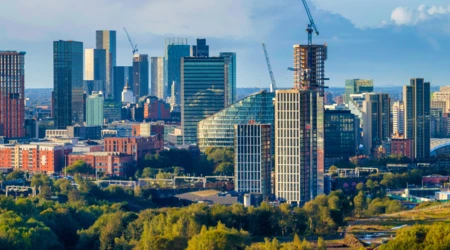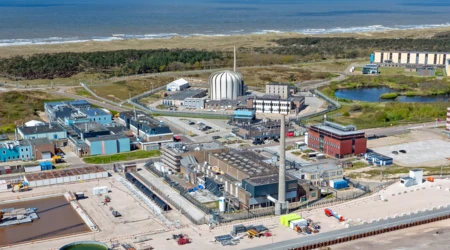Campuses, science parks and innovation areas
Attractive areas of innovation are for many companies THE logical location to concentrate their Research and Development efforts. Because they find there are other like-minded companies, (university) research institutes, shared research facilities and an attractive park.
These areas of innovation come in different forms and sizes: university linked science parks; technology parks/campuses founded by a tech company which has opened its site for other companies; inner-city located multifunctional innovation districts. A successful science park/campus/innovation districts creates advantages for all involved:
- Companies: start-ups, scale-ups and R&D centers of large corporates benefit from the concentrated specific knowhow (at universities, R&D institutes and peers), dedicated research infrastructure, availability of specialized personnel and suppliers.
- Cities experience an acceleration of new spin-offs/start-ups, more innovation results and higher productivity of companies.
- Universities are offered great opportunities for technology transfer and commercialization their research.
- Real estate developers and investors see a new asset class offering good profitability with relatively low risk and attractive yields.
The common characteristic of science parks, technology parks, innovation campuses and innovation districts is that companies and knowledge centers benefit from each other’s presence on a park. Why does proximity matter?
- Development of new technology/ products/ processes/ platforms is always international. The battle for new intellectual property, products and processes is a global one. Almost all technology driven companies have partners and customers all over the world. Distance is not a barrier
- However, experiences show that being located on a science park/technology park/innovation campus brings advantages for companies regarding easy access to knowledge, research facilities, image (‘place to be’) and common facilities/ services. Spatial concentration of economic activity is caused by the fact that people and companies experience benefits from being located close to each other (proximity).
- The importance of access to knowledge has increased due to open innovation. That means that instead of conducting ‘stand alone’ R&D, companies are more and more conducting R&D/collaborative innovation efforts together with universities, research organizations, spin-offs, suppliers etc. Open innovation often starts with informal face-to-face contacts, fostered by physical proximity.
- Proximity of interconnected companies, people and other organizations leads to a community in which people trust each other and knowledge is easily being spread. That is called local buzz.
Functions of a science park/technology park/area of innovation
- Facilitating open innovation, which is a key element in accelerating innovation on a regional/ national level.
- Being the natural habitat of (interlinked) research departments and research facilities.
- A well-functioning and well-designed science park/technology park/area of innovation attracts international knowledge workers, which is a key element in the international battle for talent.
- Acting as a self-reinforcing magnet that attracts people and organizations looking for knowledge.
A science park/technology park/area of innovation is not only the natural focal point for knowledge workers, research departments, open innovation consortia and public-private partnerships, but due to its distinctive profile it’s also an accelerator for innovation and economic growth. In the international battle in attracting R&D departments and knowledge workers a science park/campus is an important asset.


There are different types of areas of innovation who all have to be part of a true ecosystem and cluster
- Ecosystem: is the network of cross-industry players who work together to define, build and execute market-creating customer and consumer solutions. An ecosystem is defined by the depth and breadth of potential collaboration among a set of players: each can deliver a piece of the consumer solutions, or contribute a necessary capability
- Cluster: defined geographical area where triple-helix partners (enterprises – knowledge institutes/universities – governments/economic development organizations) are interconnected and work together in specific sectors/technology domains in order to create more innovation, export, start-ups, education opportunities
- Science park/ Innovation Campus: specific site where researchers of companies and universities/knowledge centers work together intensively in R&D and innovation
- Innovation District: inner-city, easily accessible, multifunctional urban areas with a mix of large and small companies, education, houses, retail, amenities, leading to an innovation ecosystem that the creation of ideas fosters and entrepreneurship stimulates
Based on two decades of research BCI Global has identified 11 success factors for a science or technology park
Success factors of a Science or Technology Park

Explanation of science or technology park success factors

BCI Global supports areas of innovation in various phases of the development:
- Concept development: determining the value proposition - what makes this park unique? We have a proven methodology to screen the technology potential of a region, focusing and assessing the tech capabilities of the university, tech institutes and all types of companies.
- Market studies: what kind of companies are interested? What background? Will they come from our own region or do we have to focus on international companies from abroad?
- Business plan: co-developing a business plan with clear objectives, financials for the first 5 years and ownership & governance structure
- Marketing plan: development of a comprehensive business plan.

09 October 2024





06 January 2025

21 September 2023















